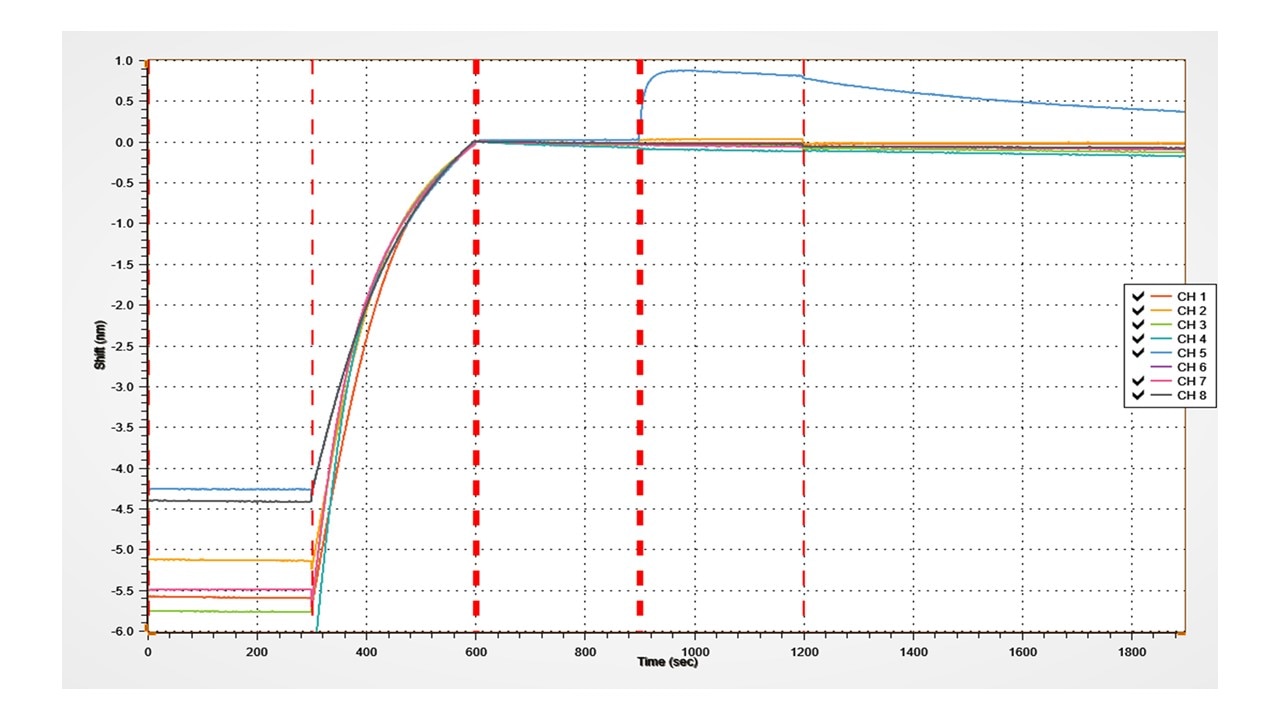Recombinant Mouse LAIR1 His-tag Protein, CF Summary
Product Specifications
Optimal concentration depends on cell type as well as the application or research objectives.
Gln22-Tyr141 & Ser25-Tyr141, both with a C-terminal 6-His tag
Analysis
Product Datasheets
Carrier Free
CF stands for Carrier Free (CF). We typically add Bovine Serum Albumin (BSA) as a carrier protein to our recombinant proteins. Adding a carrier protein enhances protein stability, increases shelf-life, and allows the recombinant protein to be stored at a more dilute concentration. The carrier free version does not contain BSA.
In general, we advise purchasing the recombinant protein with BSA for use in cell or tissue culture, or as an ELISA standard. In contrast, the carrier free protein is recommended for applications, in which the presence of BSA could interfere.
4016-LR
| Formulation | Lyophilized from a 0.2 μm filtered solution in PBS. |
| Reconstitution | Reconstitute at 100 μg/mL in sterile PBS. |
| Shipping | The product is shipped at ambient temperature. Upon receipt, store it immediately at the temperature recommended below. |
| Stability & Storage: | Use a manual defrost freezer and avoid repeated freeze-thaw cycles.
|
Reconstitution Calculator
Background: LAIR1
Leukocyte-associated Ig-like receptor-1 (LAIR1) is an inhibitory receptor of the Ig superfamily that is structurally related to inhibitory members of KIR and ILT/CD85 families (1-3). It is expressed on immune cells, including NK cells, T cells, B cells, monocytes, immature neutrophils, dendritic cells and most thymocytes (2-4). The 253 amino acid (aa) type I transmembrane (TM) protein contains a 21 aa signal sequence, a 124 aa extracellular domain (ECD), a 20 aa TM domain and a 98 aa cytoplasmic domain. The ECD includes one C2-type Ig-like domain and two potential N-linked glycosylation sites. Tyrosine phosphorylation of two cytoplasmic ITIM motifs results in recruitment of phosphatases and down-regulation of signaling through activating receptors (2, 3, 5). Crosslinking of LAIR1 inhibits processes such as B cell receptor-mediated activation, NK cell and T cell cytotoxicity and basophil degranulation (1-3). Four mouse LAIR1 splice variants have been identified, but it is not known whether they are expressed as proteins (3). LAIR1b, which is the major alternate transcript, lacks most of the ECD. Of the minor transcripts, LAIR1c lacks a signal sequence, and LAIR1d and 1e lack a TM sequence. All mouse splice forms are identical in the last 90 aa of the cytoplasmic domain. LAIR1 shows high-affinity binding of collagens that results in inhibition of degranulation in a basophilic leukemia cell line (6). Human and mouse LAIR1 ECD share only 32% aa identity but, where studied, sites of expression and activity are similar (3-6). Mouse LAIR1 ECD also shares 62%, 31% and 28% aa identity with rat, canine, and bovine orthologs, respectively.
- Meyaard, L. (2003) J. Biol. Regul. Homeost. Agents 17:330.
- Meyaard, L. et al. (1997) Immunity 7:283.
- Lebbink, R.J. et al. (2004) J. Immunol. 172:5535.
- Verbrugge, A. et al. (2006) J. Leukoc. Biol. 79:828.
- Verbrugge, A. et al. (2003) Int. Immunol. 15:1349.
- Lebbink, R.J. et al. (2006) J. Exp. Med. 203:1419.
FAQs
No product specific FAQs exist for this product, however you may
View all Proteins and Enzyme FAQsReviews for Recombinant Mouse LAIR1 His-tag Protein, CF
Average Rating: 4 (Based on 2 Reviews)
Have you used Recombinant Mouse LAIR1 His-tag Protein, CF?
Submit a review and receive an Amazon gift card.
$25/€18/£15/$25CAN/¥75 Yuan/¥2500 Yen for a review with an image
$10/€7/£6/$10 CAD/¥70 Yuan/¥1110 Yen for a review without an image
Filter by:




